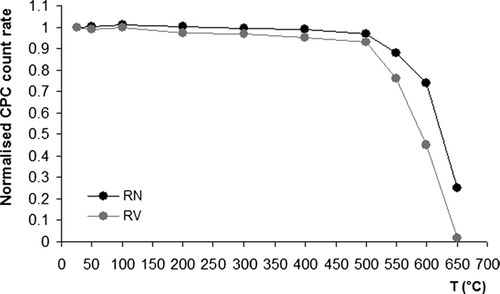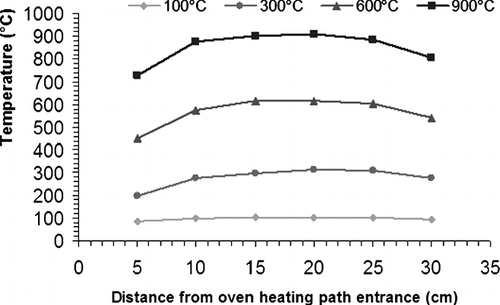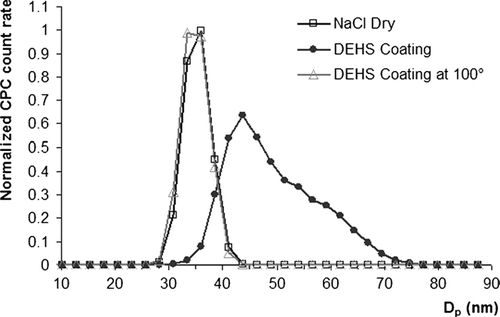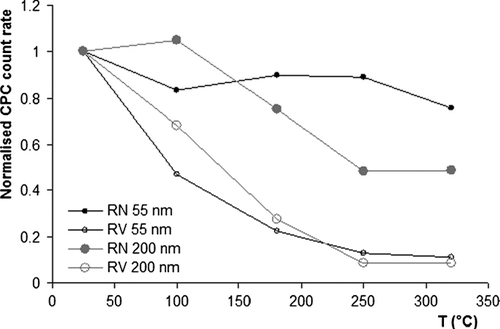Figures & data
TABLE 1 Results of iterative calculations: Ti = oven utilization temperature, Tp = desired oven wall temperature, re = calculated oven outer radius, S = oven outer surface, V = oven volume, W = oven refractory weight
FIG 2 CFD temperature profile for Tamb = 25°C and Ti = 1000°C (oven heating path). 57 × 52 mm (300 × 300 DPI).
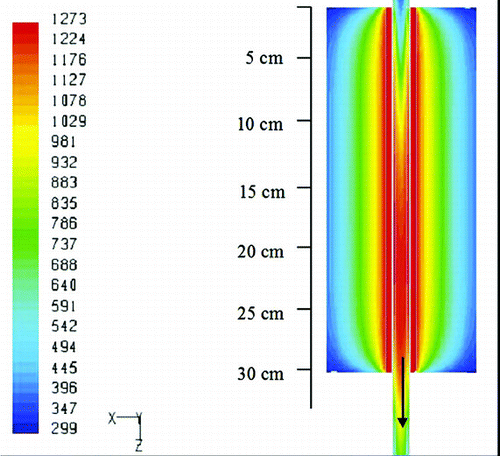
FIG 4.Results of NaCl penetration test showing the efficiency of aerosol transport through the Oven at 25°C and the VTDMA depending on the selected particle size and heater temperature (curves are deduced by fitting he measured dot raw data points). 58 × 44 mm (300 × 300 DPI).
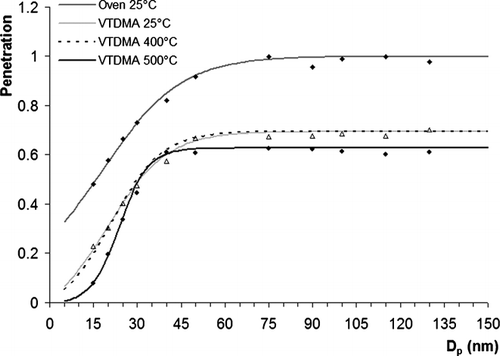
CFD particle tracks and heating prediction for Dp = 100 nm and Ti = 800°C in the entrance (0 to 10 cm), the center (15 to 25 cm) and the cooling section (50 to 60 cm) of the thermo-desorber unit. 82 × 31 mm (300 × 300 DPI).

FIG 6.Inverted volatility scans of 100 nm NaCl laboratory generated aerosol heated stepwise. 48 × 30 mm (300 × 300 DPI).
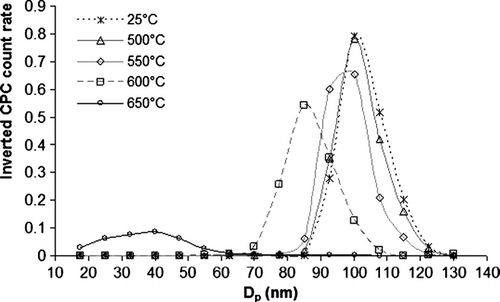
FIG 7.Fraction of number and volume of particles lost by thermo-desorption as a function of conditioning temperatures. The curves are obtained from volatilization of NaCl particles with 100 nm initial size. 49 × 29 mm (300 × 300 DPI).
